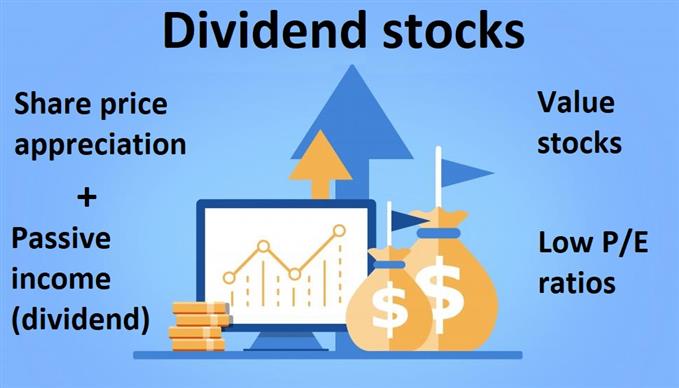We’ve all heard the commercials warning us that investments are subject to market risk. This is, in fact, a legitimate warning. But why do they warn investors? Because most new investors put a large sum of money into the market without first analyzing it or creating diversified portfolios.
Diversification entails not putting all of your money into one area. For example, if you put all of your money in one stock or all of your money in technology stocks, and those stocks fall in value, you could lose all of your money.
Simply put, don’t invest all your money in one stock. Instead, consider starting out by investing with just $1,000 (which this investment guide from Sarwa specifically shows how to do), and ensure that you diversify into different stocks. Diversification reduces risk and, in general, results in a higher return on investment. In this blog, we discussed the 5 Model Investment Portfolio Examples based on their risk profile. You can use one or a combination of them to help you achieve your share market objectives.
If you’re unsure about how to begin investing or want to learn more about creating a diversified portfolio, there are resources available to help you. For example, Joywallet offers a guide on how to invest $1,000, which provides step-by-step instructions and tips for beginners. Additionally, many investment platforms offer educational resources and tools to help you make informed investment decisions. By taking the time to research and understand the market, you can increase your chances of achieving your investment goals.
1. The Income Portfolio

There are two ways to earn returns when you invest in stocks– either via dividends or via stock price appreciation. An Income Portfolio is a portfolio that primarily consists of dividend-paying stocks. Many beginners believe that investing in an Income Portfolio entails receiving dividends in the mail or in their bank accounts on a regular basis.
However, this is not the case because dividends and coupons are frequently reinvested when investing in an income portfolio. Let’s look at income investment portfolio examples to see how this works. Assume you have $100,000 invested in a stock portfolio with a 10% annual return. Now, there are three possibilities.
Scenario #1: Your stock portfolio pays out $10,000 in dividends after a year, but the portfolio is still worth $100,000.
Scenario #2: Your stock portfolio pays no dividends after one year, but it is worth $110,000.
Scenario #3: After a year, your stock portfolio pays out $5,000 in dividends and is worth $105,000.
As we can see, your portfolio delivered the expected 10% return in all three scenarios, albeit in different ways – through dividends, stock price appreciation, or a combination of the two. As a result, investing in an income portfolio may make sense if you receive regular cash distributions. For detailed information about how Income Portfolio works, check out Ziggma.
The next in our list of Model Investment Portfolio Examples is The Defensive Portfolio.
2. The Defensive Portfolio

In addition to being a prudent choice for most investors, a defensive investment strategy is one of several investment options that is designed to protect the money that has been invested. To put it another way, these portfolios are designed to reduce the risk of money loss. To secure a proposed asset allocation, the defensive investment strategy requires regular portfolio analysis and rebalancing.
Buying high-quality, short-maturity bonds and blue-chip stocks, diversifying across sectors, placing stop-loss orders, and holding cash are all part of it. These strategies are designed to protect investors from large losses caused by major market downturns. Furthermore, regardless of the state of the overall stock market, defensive stocks offer steady dividends and stable earnings.
Also, defensive stocks are less likely to go insolvent during downturns due to their relative strength. Consider the necessities in your daily life and look for companies that make these consumer staples if you want to build a defensive stock portfolio for yourself. As a bonus, many of these businesses pay a dividend, which helps mitigate capital losses.
The next in our list of Model Investment Portfolio Examples is The Aggressive Portfolio.
3. The Aggressive Portfolio

The aggressive portfolio is a type of investment strategy that aims to maximize returns by assuming a higher level of risk. Since strategies for achieving more-than-average returns typically emphasize capital appreciation as a primary investment objective rather than principal safety, the aggressive portfolio strategy would have an asset allocation that included a significant focus on stocks and possibly little or no allocation to bonds or cash.
Portfolio A, for example, with an asset allocation of 70% equities, 20% fixed income, and 10% commodities, would be considered aggressive because equities and commodities account for 80% of the portfolio’s weighting. It would, however, be less aggressive than Portfolio B, which has an asset allocation of 90% equities and 10% commodities.
Furthermore, even within an aggressive portfolio’s equity component, the stock composition can significantly impact its risk profile. For example, a portfolio containing only blue-chip stocks would be considered less risky than one containing only small-capitalization stocks.
Since aggressive portfolio strategies are more volatile and may require frequent adjustments depending on market situations, they require more active supervision than buy-and-hold strategies. In addition, more diversification will be required to maintain portfolio allocations to their target levels. The next in our list of Model Investment Portfolio Examples is The Speculative Portfolio.
4. The Speculative Portfolio

The act of conducting a financial transaction with a significant risk of both losing and gaining value is referred to as speculation. Speculative stocks are frequently seen in niche industries like energy. These industries have a high likelihood of unexpected success or failure.
While the risk associated with a speculative stock portfolio is high, the investors are typically more concerned with generating a profit based on market value than with long-term investing.
Furthermore, there is an investment practice known as currency speculation, which entails purchasing a foreign currency. In this scenario, an investor buys a currency with the intent of later selling it at a higher value, as opposed to an investor who buys a currency to pay for an import or to finance a foreign investment. So now, you got that how a speculative portfolio works.
The next in our list of Model Investment Portfolio Examples is The Hybrid Portfolio.
5. The Hybrid Portfolio

The term “hybrid” refers to a fund strategy that invests in a variety of asset classes. Hybrid funds provide investors with a well-balanced portfolio. In general, it indicates that the fund exercises a mixed management strategy. Other investments, such as bonds, commodities, real estate, and so on, are also required in this type of portfolio.
Balanced funds, target-date funds, and hybrid funds are all examples of hybrid funds. All of these types invest in a variety of asset classes in order to diversify their portfolios. For example, allocations in risk-adjusted and balanced funds will typically remain at a finite level. On the other hand, hybrid funds will always include some combination of two or more asset classes.
To react to changing market conditions and potential capital appreciation opportunities, the portfolio managers may actively regulate individual holdings within each asset category in all of the funds. These are the 5 most common model investment portfolio examples, each with its own set of risks and rewards. Based on your risk tolerance and investment amount, select a portfolio type.
Summing Up: As an investor, you should take an in-depth look at all of these investment portfolio examples and choose the best one or, better yet, the best combination of several. “The stock market is a device for transferring money from the impatient to the patient,” Warren Buffett says. So, in addition to selecting the best stock portfolio, be patient to obtain the highest possible returns.







